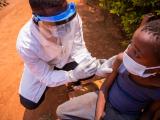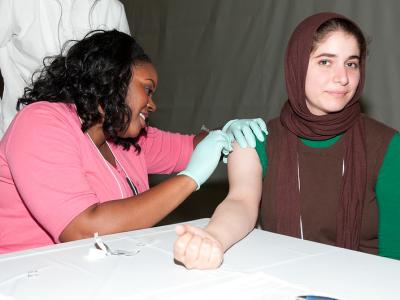A meta-analysis of 158 observational studies from 49 countries on six continents reveals severe disruptions in cardiovascular (CV)-related hospitalizations, diagnostic and interventional procedures, and outpatient visits during the first 2 years of the COVID-19 pandemic.
The study, the first global evaluation of cardiac-services delivery amid the pandemic of its kind, was published yesterday in the European Heart Journal.
A team led by University of Leeds researchers in England analyzed studies on global cardiac services published from January 2019 to December 2021, most of them from high-income countries (HICs). When health systems were overwhelmed with COVID-19 cases, elective surgeries were canceled, they noted, and many patients needing even emergency care feared the infection risks of hospital admission.
Hospitalizations drop for severe heart attack
Regardless of CV disease type and geographic area, fewer hospitalizations, diagnostic and interventional procedures, and outpatient visits occurred during the pandemic. Across all countries, there was a 22% decline in hospitalizations for severe ST-segment elevation myocardial infarction (STEMI) and a 34% drop in less serious non-STEMI heart attacks. The researchers said the declines were the result of fewer people seeking medical care rather than a drop in heart attacks.
The investigators also observed a global 34% drop in cardiac surgeries, a 49% decline in the placement of electronic implantable devices such as pacemakers, and an increase of 17% in all-cause deaths, driven primarily by CV deaths in low- and middle-income countries (LMICs).
In-person cardiac visits declined overall (incidence rate ratio [IRR], 0.27; 95% confidence interval [CI], 0.09 to 0.75). Five studies showed an increase in telemedicine appointments in all countries. But three multicenter studies from the United States and Germany found declines of 61%, 33%, and 5% in outpatient visits, even when including telemedicine appointments. According to survey studies, half of all exercise-based heart rehabilitation programs closed amid the pandemic, and many of the ones that continued provided only virtual visits.
Relative to HICs, LMICs saw more severe disruptions in STEMI hospitalizations (risk ratio [RR], 0.79; 95% CI, 0.66 to 0.94) and revascularization procedures (RR, 0.73; 95% CI, 0.62 to 0.87).
When patients did seek medical help, they experienced an average of a 69-minute delay in reaching the hospital or having contact with paramedics—a significant factor in outcomes after heart attack or cardiac arrest. And when they did receive hospital treatment, they sometimes were given substandard heart-attack care with clot-dissolving drugs rather than interventional procedures such as placing a stent into a blocked artery.
This resulted in an elevated death rate among hospitalized patients in LMICs and more people dying at home from CV disease relative to before the pandemic in the United Kingdom (31% actual vs 24% expected). In UK nursing homes, those figures were 16% vs 14%, respectively.
LMICs, but not HICs, saw increases in in-hospital death for STEMI (RR, 1.22; 95% CI, 1.10 to 1.37) and heart failure (RR, 1.08; 95% CI, 1.04 to 1.12), and the degree of decline in hospitalizations for CV indications was similar in the first and second pandemic waves.
In many LMICs, just 73% of patients having a major heart attack and 69% of those having a less severe heart attack received treatment.
'Substantial global collateral CV damage'
The findings reveal "substantial global collateral CV damage during the COVID-19 pandemic with disparity in severity by country income classification," the researchers wrote, adding that data are insufficient to fully describe the effects in LMICs.
Cardiac health will "continue to accrue unless mitigation strategies are speedily implemented. The deferral of interventional procedures, especially for structural heart disease, leaves many patients at high risk of adverse outcomes," they added.
In a University of Leeds news release, lead author Ramesh Nadarajah, MBBS, said the disruptions in cardiac-service delivery will have ramifications well into the future. "The longer people wait for treatment for a heart attack, the greater the damage to their heart muscle, causing complications that can be fatal or cause chronic ill health," he said. "Health systems need to reinforce systems to help support and treat people whose heart conditions will inevitably be worse because of the pandemic."
Coauthor Samira Asma, DMD, MPH, assistant director-general for data, analytics and delivery for impact at the World Health Organization, noted that 80% of the world's population live in disproportionately burdened LMICs. "This underscores the need for universal health coverage and access to quality care, even more so during the pandemic," she said in the release.



















